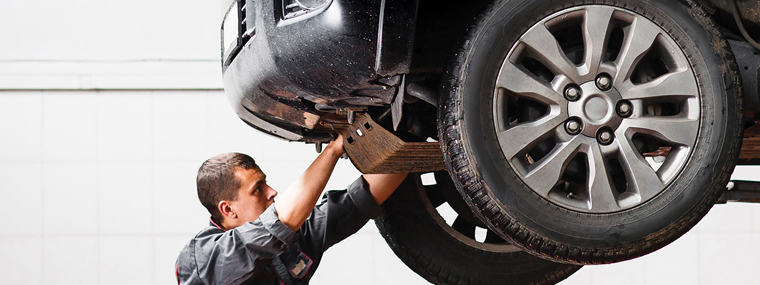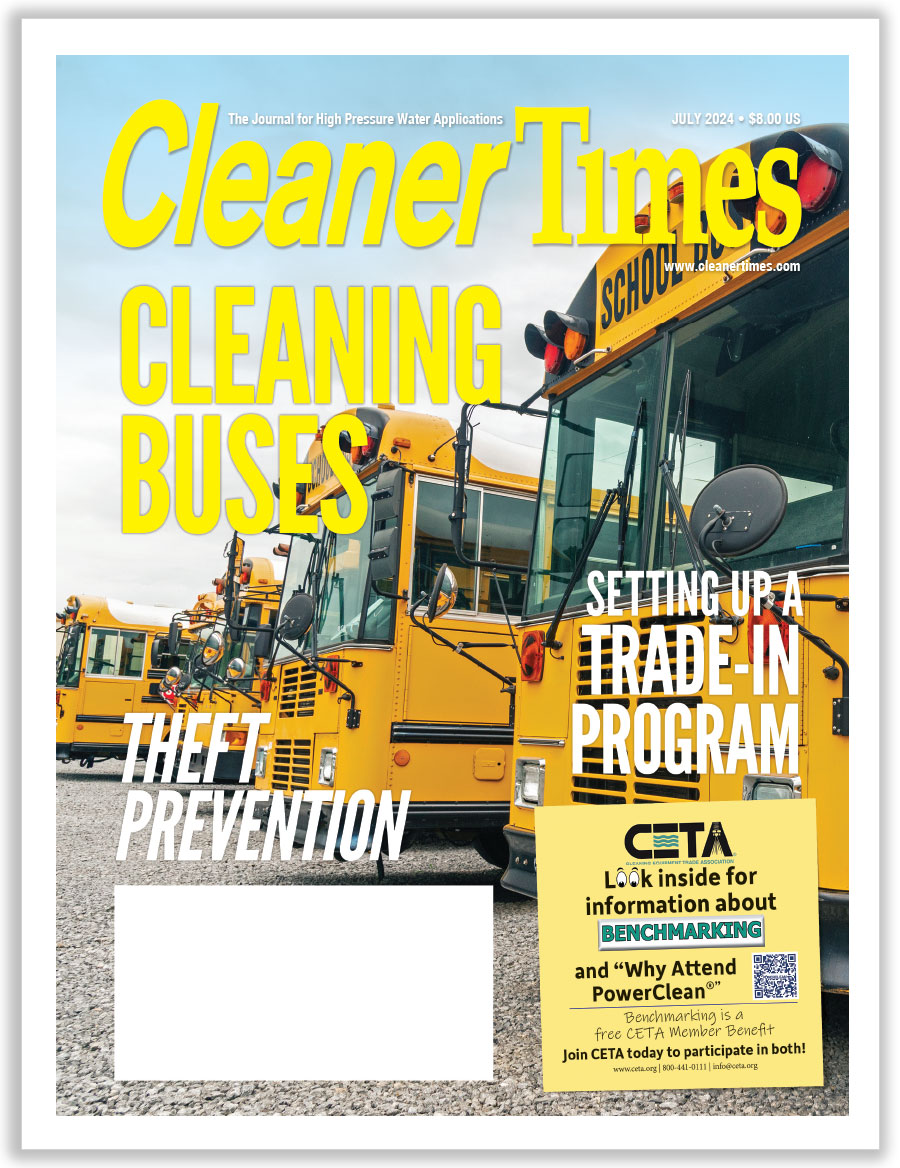
Neglect Guarantees Breakdown
By Diane M. Calabrese / Published April 2019

E
quipment and Vehicle Maintenance Checklists
Reactive maintenance sounds a bit poetic, but it’s really a soft term for a harsh reality: neglect guarantees breakdown.
The breakdown brings a reaction. If an equipment owner is lucky—and neglect has not been too great—it may be possible to get going again thanks to completing overdue maintenance.
An Operations and Maintenance (O&M) Best Practices Guide from the U.S. Department of Energy identifies four types of maintenance, which can be accessed at www1.eere.energy.gov/femp/pdfs/OM_5.pdf. What’s refreshing about the guide—one of the many produced by government and industry—is that it addresses the lackadaisical maintenance programs too often in place.
Among maintenance strategies, reactive maintenance predominates among business owners. Readers can do a self-assessment here. Have they a van with tires overdue for rotation? Are new wiper blades needed? Just a bit of postponement because of intense commitments elsewhere can lead to a serious lapse in maintenance.
The O&M report does not judge. It actually cites two advantages to the run-it- until-it-breaks approach. It costs less (in the short term) and requires fewer staff.
The disadvantages carry more weight—cost of repair or replacement increases, the machine or vehicle is taken out of service for an extended period, and employees are left without tools needed for their work. There’s also the risk of secondary equipment or process damage from a failure.
As costly philosophies go, don’t-fix-it-if-it-isn’t-broken ranks high. Preventative maintenance aims to balance efforts to forestall natural wear on equipment and vehicles with time and money invested. It is the approach most owners of machines aspire to even if they sometimes fall short.
Predictive maintenance—made possible by tools such as built-in diagnostics— is making preventative maintenance easier. Reliability-centered maintenance acknowledges the cost of onboard diagnostic systems and external monitors and evaluates the importance of machines in choosing which will be fitted with a predictive system and which will get preventative treatment only.
A hollow curve reflects the failure of components of machines. That is, any defective component in a new machine is likely to fail immediately. After the initial startup, the machine should run through a quiet period with some issues but not many. Eventually, the machine will enter a period when it begins to wear out, and there will be an increasing rate of failure (and perhaps a steep one).
The purpose of preventative maintenance is not to ensure a vehicle or piece of equipment will run forever. It is to ensure the design life of the machine will be realized.
It takes time. And that’s why too many of us sometimes backslide. A checklist helps.
Before pshawing checklists as too much of a good thing, consider ways to make the most of them. Consolidation brings coherence to the maintenance checklists that typically come with each machine.
The reality of doing business is that the checklists required by regulating entities are not optional. Thus, the owner of a van may be willing to skirt requirements for maintaining its warranty, but taking any shortcut to checklists required by local, state, and federal regulators would be nothing short of foolhardy.
The U.S. Department of Transportation (DOT) and the Occupational Safety and Health Administration (OSHA) have purview over vehicle safety. DOT regulations encompass road worthiness of a vehicle. OSHA regulations focus on the employees who perform the maintenance on the vehicle—are the employees working in a safe and healthy environment?
Both DOT and OSHA take a keen interest in containing hazards from chemicals.
For example, since January 1, 2005, hazardous materials safety permits (HMSP) have been required of any vehicle with an MC number (authority to operate) from the Federal Motor Carrier Safety Administration (FMCSA) at DOT. Just which vehicles need an MC number depends on the type of activity, intrastate or interstate routes travelled, and size, as well as chemicals been carried.
[See “Meeting DOT Requirements” in the June 2018 issue of Cleaner Times for more, www.cleanertimes.com/magazine/cleaner-times-articles-2/meeting-dot-requirements.]
The FMCSA interest in a vehicle varies slightly—requirements become more stringent (e.g., push-out windows)—if a vehicle driver carries passengers. For any vehicle with authority to operate, the FMCSA expects records of inspection, repairs, and maintenance to be available
on request.
OSHA holds an employer responsible for the safety of a vehicle an employee is operating. Allowing an employee to operate a vehicle that is not properly maintained in any of its components—ranging from hazard warning signals and brake systems to fuel systems and wheels—would be an OSHA violation.
Both DOT and OSHA have oversight responsibility regarding the hours of drivers. And many OSHA standards apply to what happens in the service area for vehicles. Is there proper ventilation? Are employees trained correctly?
Adding to the thicket of federal regulations are the augmentations made by states. It’s complicated. So complicated that maintenance checklists not only help ensure preventative upkeep is done, but also that there is a record of all maintenance.
Regulators and employers share the common goal of safety. Inspections and required recordkeeping enable regulators to obtain a baseline as much as to identify serious issues.
A van windshield may be hit by flying debris and crack just minutes before a random roadside inspection. FMCSA uses a Vehicle Maintenance Behavior Analysis and Safety Improvement Category (BASIC) to collect and aggregate data from safety events in order to ensure that the occasional cracked window does not attain the significance of driving with faulty brakes.
Abundance of Assistance
Developing a checklist for vehicles or equipment need not be a do-it-yourself project. Visit the USA.gov portal to find sample checklists. Most states offer vehicle checklists, and the portal provides easy access to them.
Original equipment manufacturers (OEMs) will provide a preventative maintenance schedule that can be converted to a checklist if it’s not in that form already. With vehicle and equipment checklists in hand, consolidation—an overarching plan—brings manageability to all.
Use a spreadsheet or pages in a notebook or both. Type of maintenance (vehicle, pressure washer, surface cleaner, etc.) would be in the left column. The twelve months of the year would run horizontally. An ‘X’ in a cell would indicate that it is the month for maintenance on that vehicle or equipment.
Arrangement of an overarching plan and checklists are a matter of preference. But it makes sense to keep the plan separate from the checklists (specific). If January is a month for van maintenance, a separate sheet (sheets) can be used for the checklist that corresponds to that maintenance.
What should be on a vehicle preventative maintenance checklist? Tasks to be performed, result (e.g., okay as is, repair made, lubrication done), and any clarifying notes. Engine, under the hood fluids, brakes, and general road worthiness are the big categories. Specific items under the engine will include oil filter, fuel filter, and spark plugs. Road worthiness items to check will include wiper blade integrity, tire inflation, and washer fluid. (Many more items would be included in each category. For brevity, we give only a few examples.)
Maintenance schedules and checklists are not static documents. They can grow, and they might decrease if they are replaced with some onboard diagnostics in vehicles or equipment.
The scheduling of preventative maintenance must be tied to frequency of use. A monthly schedule for checking heavily used equipment or vehicles may not be sufficient.
Generally, vehicles are slated for checks by miles accrued or time in service, such as recommended actions at 5,000 miles or 12-month intervals. Machines are slated for checks by hours of service logged or time in service, such as 100 hours or one-month intervals.
Checklists also apply to the daily inspection of equipment and vehicles. Manufacturers of pressure washers provide reminders of what to check prior to each use. Briggs & Stratton—chosen at random—reminds operators to check oil, screens, and hoses and couplings, with some details on each. The same manufacturer also reminds you what to do after each use (flush cleaning detergent, relieve pressure in the system). (See www.briggsandstratton.com/na/en_us/support/maintenance-how-to/browse/preventative-pressure-washer-maintenance.html.)
Daily inspection of a vehicle should include tires (wear, inflation), signs of fuel leaks (spots under vehicle), fluid levels, and a walkaround to inspect for damage (and obstacles that might have landed in drive path).
Whys
Why is reactive maintenance so popular? It saves time. (That’s not a recommendation.)
As operators of equipment and vehicles know well, strict adherence to a plan for preventative maintenance consumes time; it is labor intensive. And there are no assurances, since breakdown can still occur). Moreover, the maintenance may not be needed, and the very act of undertaking it could damage components.
Why not just react? There are several reasons. Records of routine checks are always useful if regulators come calling. Checklists help employees stay focused because they gain a firmer attachment to vehicles and equipment. The development of checklists may put a focus on safe workplace practices involving vehicles and equipment—think of it as team building.
In the every-bit-counts category, preventative maintenance keeps machines running efficiently. Efficiency saves energy.
The longevity of the vehicle or equipment may not be increased with preventative maintenance, but it will run better along its trajectory toward inevitable wear-out one day.






